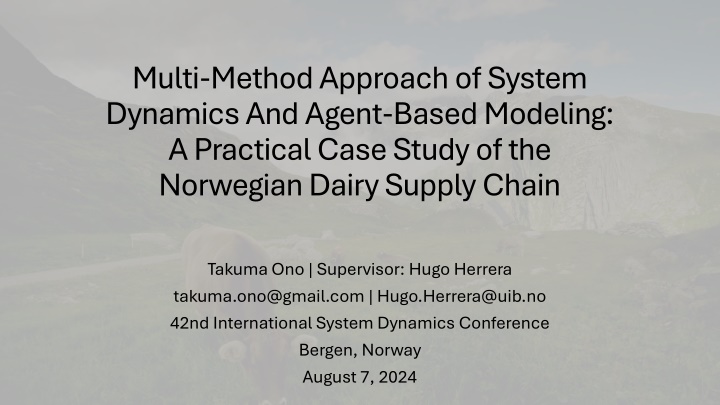
Practical Case Study of Norwegian Dairy Supply Chain Utilizing Multi-Method Approach
Explore a practical case study of the Norwegian dairy supply chain, employing a multi-method approach blending system dynamics and agent-based modeling. Discover the strengths and drawbacks of each approach, as well as the methodology and software used in the study.
Download Presentation

Please find below an Image/Link to download the presentation.
The content on the website is provided AS IS for your information and personal use only. It may not be sold, licensed, or shared on other websites without obtaining consent from the author. If you encounter any issues during the download, it is possible that the publisher has removed the file from their server.
You are allowed to download the files provided on this website for personal or commercial use, subject to the condition that they are used lawfully. All files are the property of their respective owners.
The content on the website is provided AS IS for your information and personal use only. It may not be sold, licensed, or shared on other websites without obtaining consent from the author.
E N D
